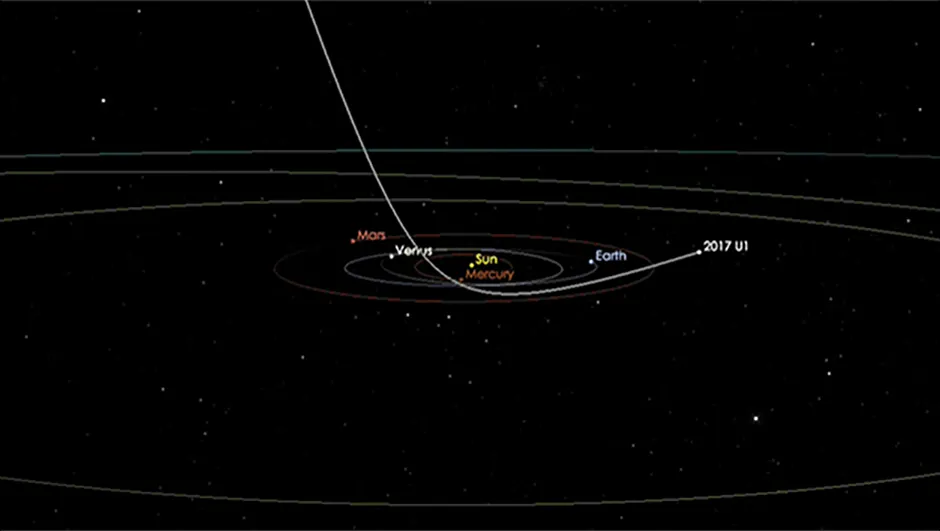Astronomers have spotted an object – either an asteroid or comet – that appears to have originated from outside the Solar System. If so, this would make it the first to be observed and confirmed by astronomers.
The object has been named A/2017 U1 and is less than 400 metres in diameter.
It was spotted on 19 October by the University of Hawaii Pan-STARRS 1 telescope during its regular search for near-Earth objects for NASA.
A/2017 U1 appears to have come from the direction of the constellation of Lyra, and is traveling at about 25.5 kilometres per second.
Because of its high velocity, astronomers around the world are currently getting some of the best telescopes on the planet to search for it.
The object approached our Solar System from almost directly above the ecliptic.
This is the imaginary plane on which the planets and most asteroids orbit the Sun.

Astronomers are able retroactively to track the object's movements up until the point it was spotted.
On 2 September, the object crossed under the ecliptic plane inside Mercury’s orbit and then its orbit took it to its closest approach to the Sun on 9 September.
The gravitational pull of the Sun then caused it to turn and travel 'under' our Solar System, passing under Earth’s orbit on 14 October at a distance of about 24 million kilometres.
Now, AU/2017 U1 has come back above the plane of the planets and is travelling towards the constellation of Pegasus.
The object was first identified by Robert Weryk, a postdoctoral researcher at the University of Hawaii Institute for Astronomy (IfA).
“Its motion could not be explained using either a normal solar system asteroid or comet orbit,” he says. “This object came from outside our Solar System.”
